Discover five key features for CG artists in Unity 2021.1
Unity Technologies has shipped Unity 2021.1, the first of two scheduled updates to the game engine this year.
By Unity’s own standards, it isn’t a feature-heavy update: when the firm announced its 2021 roadmap last year, it said that it planned to focus on stability as well as simply adding new tools to the editor.
In the demo video above, Unity 2021.1 plays second fiddle to Unity 2020.3, the Long Term Stability (LTS) release, which also shipped last week, and which has all of the features from Unity 2020.1 and Unity 2020.2.
However, there are some significant changes in the 2021.1 update itself, from integrated visual scripting to improved rendering, so below, we’ve picked out five highlights for CG artists as opposed to developers.
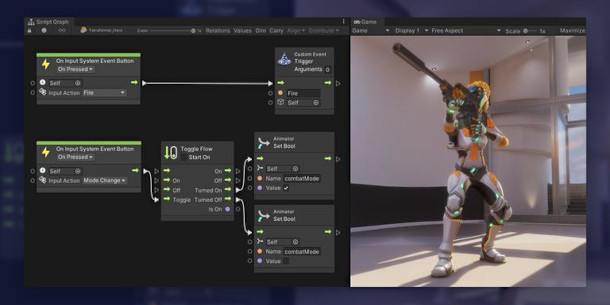
1. Integrated visual scripting
Unity 2021.1 sees the Bolt visual scripting system, which Unity acquired from original developer Ludiq in 2019, move from a free add-on to an integrated part of the Unity core.
The system enables artists to create custom tools or technical effects – it supports key toolsets like Cinemachine and the VFX Graph – by wiring together nodes in a graph, rather than writing code.
It works in parallel to Unity’s existing C# scripting functionality, with users able to drag existing C# scripts into the Unity Editor’s new unified visual scripting window and reference their mechanics.
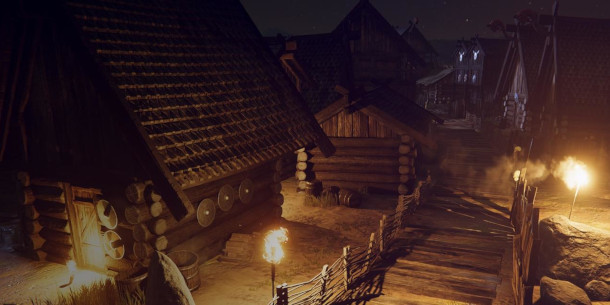
2. Point Light Shadows in the Universal Render Pipeline
Most of the recent changes to Unity’s render pipeline came in Unity 2020.2 last year, but Unity 2021.1 does add one much-requested feature: point light shadows in the Universal Render Pipeline.
The functionality enables the URP, intended for use in web and mobile games, to generate more realistic shadows from local light sources in a level, like torches or campfires.
Under the hood, the Scriptable Render Pipeline – the underlying technology of both the URP and its console and desktop counterpart, the HDRP – is now integrated into the Unity core, not a separate package.
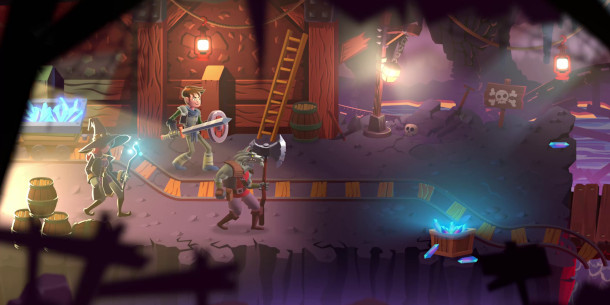
3. New Camera Sorting Layer Texture for 2D graphics
Changes to Unity’s 2D toolset include a new Camera Sorting Layer Texture, which combines pixel data into a frontmost sorting layer, and which is intended for creating effects like heat haze and refractive water.
Under the hood, the engine now conforms to best practices for ARM’s Mali GPUs, used in a range of mobile devices, including Huawei and Samsung smartphones.
Among other changes, light textures are now pre-rendered to cut memory usage on mobile devices: in its keynote at GDC Showcase earlier this month, Unity cited a 15% reduction in memory bandwidth.
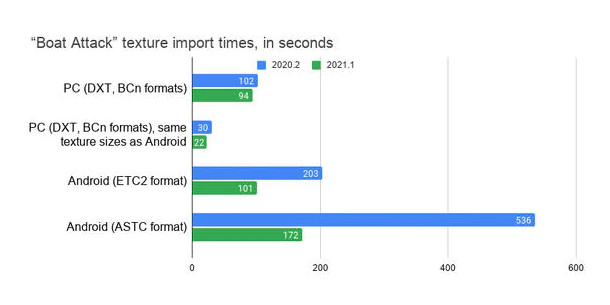
4. Workflow and performance improvements
Workflow improvments in Unity 2021.1 include the integration of Quick Search, previously a separate package, into the Unity core.
It enables users to find and filter assets, including textures, animations and timelines, inside the Unity Editor using “complex search queries”.
In addition, the LOD Group inspector, used to manage transitions between levels of detail for assets, can now display LODs as percentages of screen size.
The inspector also displays triangle counts for LOD levels and the change in counts between levels.
Performance improvements include updates to mesh static batching, reducing the time taken to enter Play Mode: according to Unity, a test scene with 30,000 static objects was “faster by about two seconds”.
Bringing new textures into Unity or updating existing textures is now “up to 3x faster”, and 2D sprite processing is also “faster”, although the online notes don’t put a figure on that one.
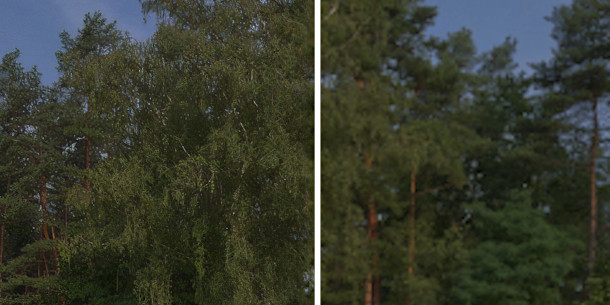
5. UpRes 2.0 in ArtEngine
Outside the game engine itself, ArtEngine, the AI-based material-processing toolset that Unity acquired with original developer Artomatix last year, has also been updated.
Version 2.0 of ArtEngine’s Upres system, used to increase the resolution of 2D art assets created for previous-gen games so that they can be reused in new titles, rolled out shortly before Unity 2021.1.
During GDC Showcase, Insomniac Games principal technical artist Nathaniel Bell described it as “the best remastering tool on the market”, saving the studio “50% to 75% [in processing time] depending on the case”.
The previous update, ArtEngine 2021.1, released last month, introduced a range of new nodes, including a Pattern Array node for texture scattering.
Pricing and system requirements
Unity 2021.1 is available for Windows 7/10, Ubuntu 18.04/20.04 and CentOS 7 Linux, and macOS 10.13+.
The software is available on a rental-only basis: free Personal subscriptions have a non-removable splash screen and can be used by anyone with revenue of up to $100,000/year.
Paid Plus and Pro plans cost $40/month and $150/month for an annual subscription paid monthly, or $399/year and $1,800/year.
ArtEngine is available on Windows 8.1+ only, including for users of other game engines. It is also rental-only, with a standard price of $1,140/year for the base edition.
Read a full list of changes in Unity 2021.1 in the online release notes
